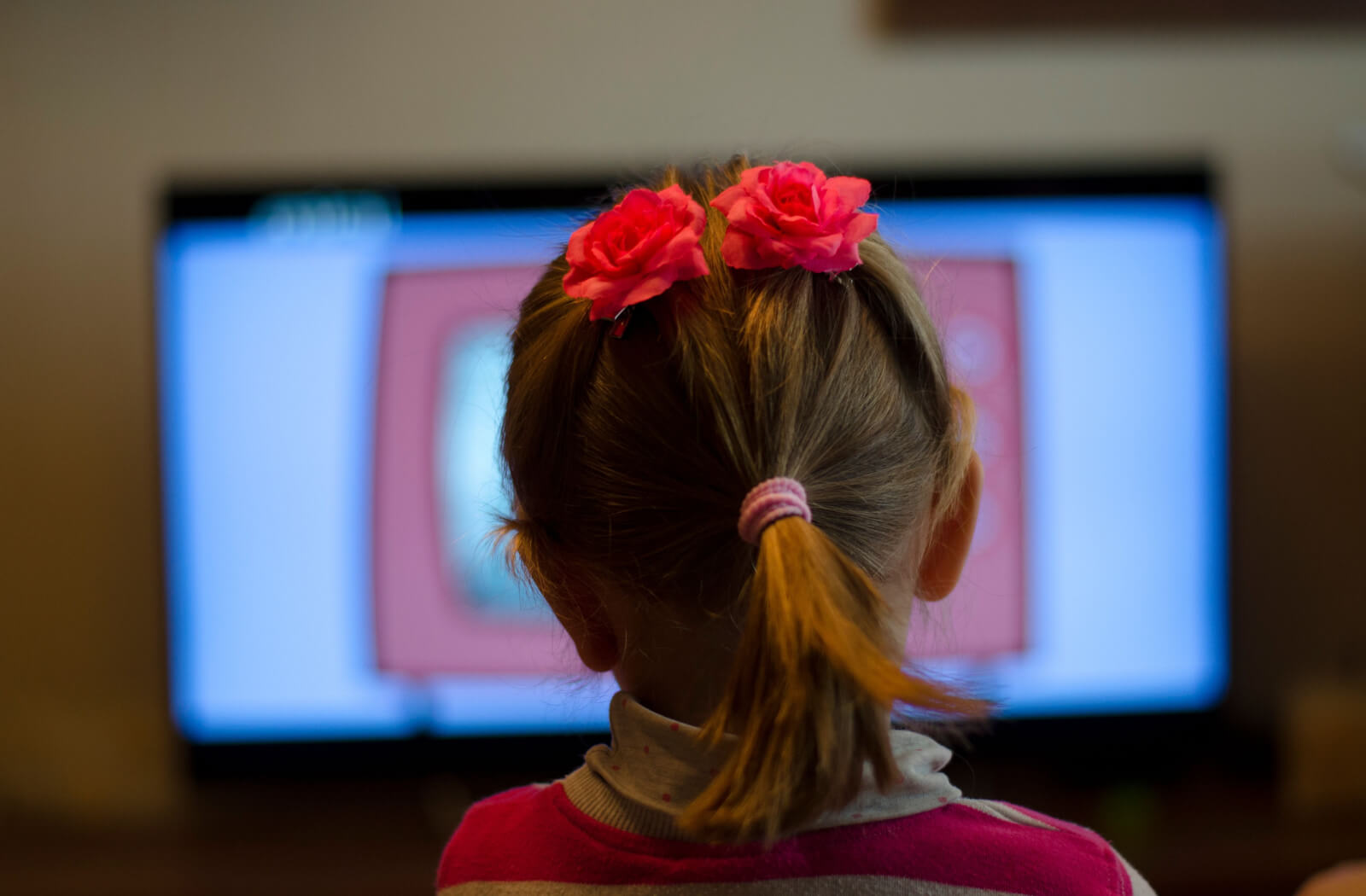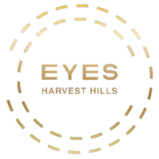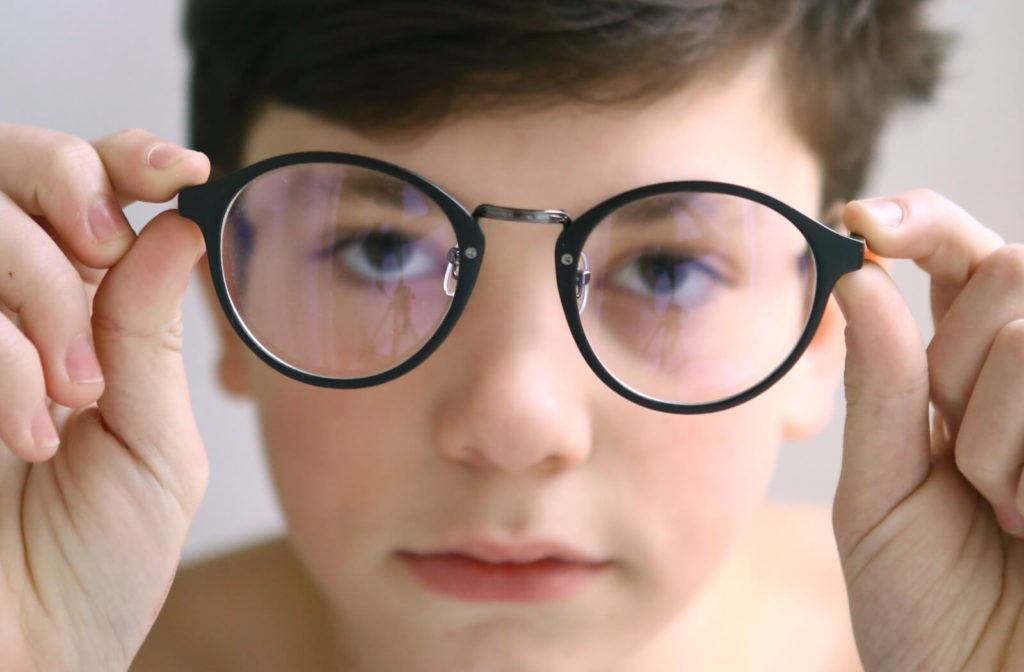If your child complains of blurry vision or you notice them rubbing their eyes and leaning close to their screens, myopia may be the cause.
Myopia, also known as nearsightedness, is a common refractive error affecting nearly 30% Canadians. It emerges in childhood and can begin as early as 6 to 8, often progressing into early adulthood.
Fortunately, myopia control options, including myopia control glasses, are available to help stem its progression in growing eyes. These specialty glasses work by correcting existing vision problems and contain technology to prevent myopia from progressing as the eyes develop. Myopia control aims not to cure your child’s myopia but to preserve their eye health and vision into adulthood.
What Is Myopia Control?
Myopia control covers several methods focused on slowing myopia progression. It includes:
- Orthokeratology
- Atropine eye drops
- Multifocal contact lenses
- Specialty eyeglasses
Corrective lenses change how light is focused on the retina, helping the eye grow more naturally and stably. Myopia control can help to reduce the risk of future complications associated with myopia, such as cataracts, glaucoma, and retinal detachment.
Children can’t always tell if there is something wrong with their eyesight, so watch for signs of myopia, including:
- Sitting too close to screens
- Eye rubbing
- Tilting their head
- Holding books too close to their face
- Squinting
Early intervention with myopia control methods can help maximize their effects, and there’s evidence that beginning between the ages of 6 and 8 can provide positive results. However, every case of myopia is unique, and age isn’t the only determining factor that impacts myopia control success. Your optometrist can make a personalized treatment plan after assessing your child’s eyes in a children’s eye exam.

Glasses for Myopia Control in Children
Specialty myopia control glasses have been shown to reduce myopia progression by up to 50% in some cases.
There are numerous benefits to using myopia control glasses for children with myopia:
- They can help maintain better visual acuity and reduce the need for stronger prescriptions in the future.
- They can help to minimize eye strain and fatigue associated with prolonged screen time.
- They can also improve visual comfort.
Which Myopia Control Glasses Should I Choose for My Child?
If you’re considering myopia control glasses for your child, it’s essential to consult with an eye care professional. A thorough eye exam can help determine whether your child is a good candidate for myopia control glasses, help you choose the right type, and identify any underlying eye conditions that may need to be addressed.
Bifocal Spectacle Lenses
Bifocal lenses have both distance and near vision prescriptions. It’s been found that children who wear bifocal spectacle lenses experience reduced myopia progression compared to single-vision lenses. Bifocal lenses help children see clearly near and far, making them an ideal option for those needing different lens powers for various tasks.
MiYOSMART Spectacle Lenses
MiYOSMART lenses are a newer type of myopia control lenses developed by Hoya Vision. These lenses use Defocus Incorporated Multiple Segments (DIMS) technology to mimic the nature of the eye’s growth and change how light is focused before reaching the retina.
SightGlass
SightGlass lenses use innovative Diffusion Optics Technology (DOT) designed to mimic natural contrast at all distances. Artificial contrast from digital screens and close work like reading can signal the eyes to grow longer, worsening myopia. These lenses scatter artificial light before it reaches the retina, preventing the eye from getting too long.
Essilor Stellest Lenses
Essilor Stellest lenses employ several concentric rings of varying powers as a “treatment zone.” These rings create peripheral defocus areas that tell the eye it can stop growing. Stellest lenses correct vision and slow myopia progression by about 50% compared to standard single-vision lenses.
Zeiss MyoVision
Zeiss MyoVision uses Cylindrical Annular Refractive Elements (CARE) to slow the elongation of the eye while delivering clear, comfortable vision. Zeiss offers different types of myopia control glasses designed to address varying levels of nearsightedness.
Selecting the Right Glasses Frame for Your Child
Choosing the right lenses is the first step. Then, you need to find comfortable eyeglass frames that fit well, look good, and that your child will actually want to wear. Here are a few factors to remember when selecting frames for your child:
- Consider the fit: The frames should fit their face snugly but not too tightly, allowing enough room for ventilation and movement.
- Look for durability: Children are highly active and can be rough on their glasses, so choose frames that are durable, lightweight, and flexible.
- Choose a style your child loves: The frames should reflect your child’s personality and style because the more they love their glasses, the more likely they are to wear them willingly.
- Involve your child: Having your child help pick out their glasses can empower them to take ownership of their vision and feel positive about wearing glasses.
Find the Myopia Control Solution for Your Child
Myopia control can help protect your child’s vision into adulthood. A range of solutions exist that can fit your child’s preferences, lifestyle, and vision needs. Schedule an appointment with our team at Eyes on 34th for a children’s eye exam to determine their prescription and explore myopia control methods. Even in their early childhood, you can take steps to protect their eye health for life.




